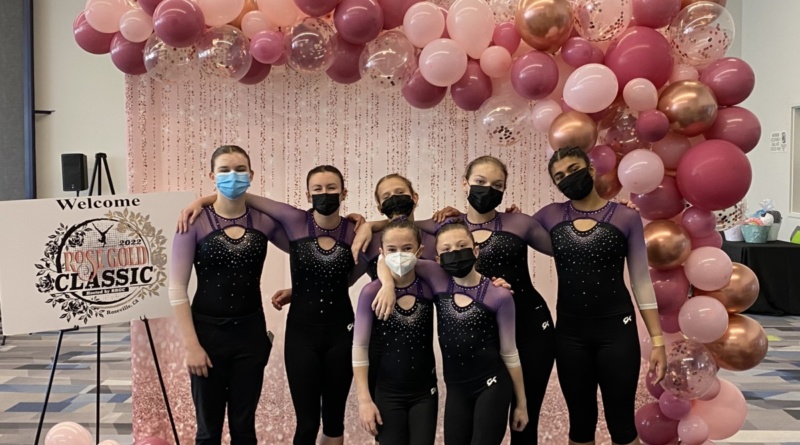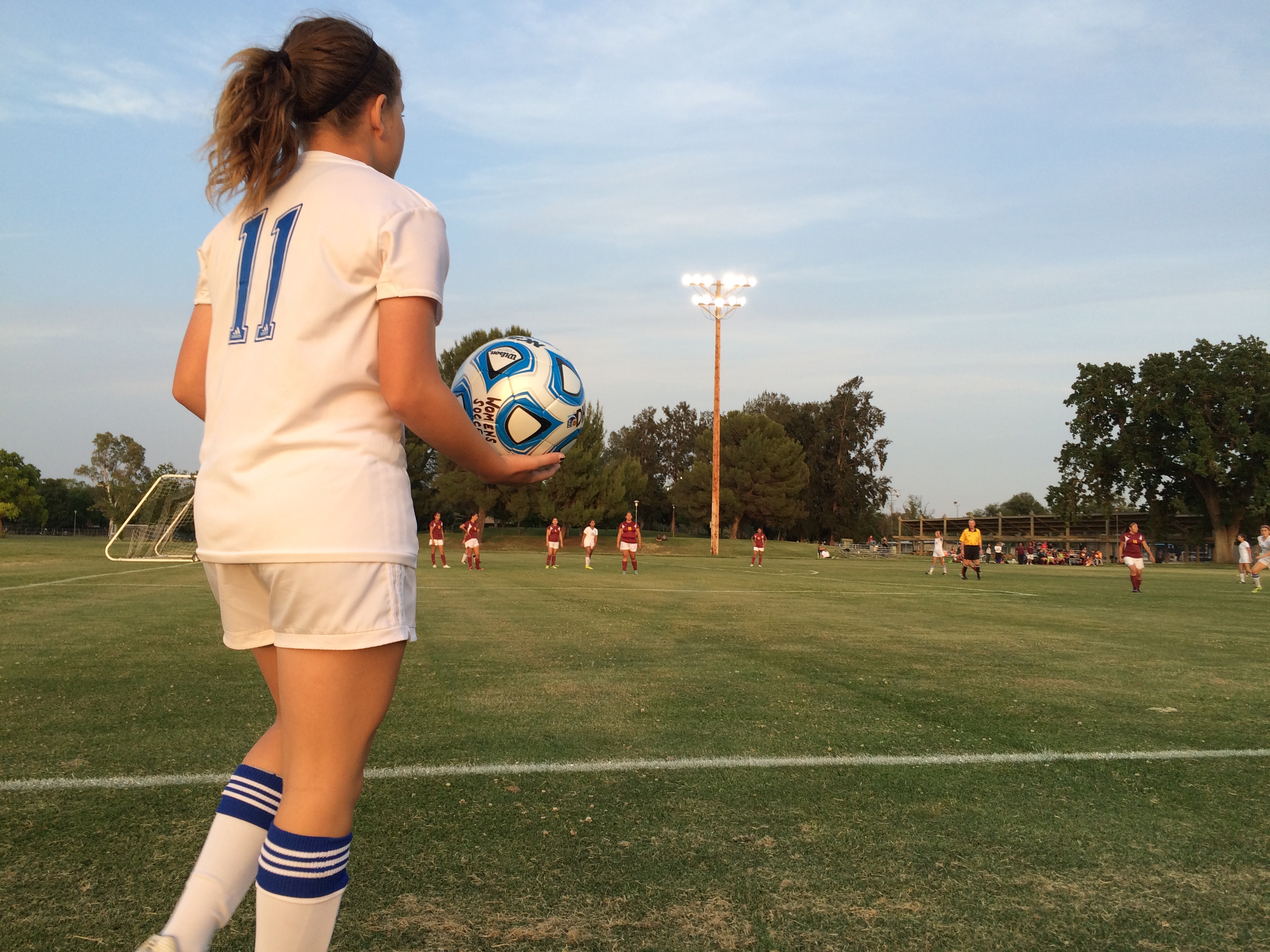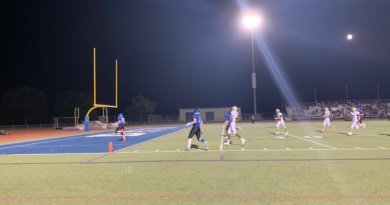Student athletes seek credit for peripheral pursuits
PHOTO: The Davis Diamonds Gymnastics’ competitive team including junior Sofia Patriquin poses following an early 2022 meet
By Sean Campbell & Declan Fee
HUB Staff–
Davis High’s “Athletics” course, formerly “Independent Lifetime Sports,” offers students with the opportunity to opt out of regular physical education classes if they participate in a school sport.
“Athletics is a course designed to allow our student athletes to have a free period to work on homework, study, travel to games, etc, since they are spending several hours after school participating on the school team (practices and games),” said Julie Crawford, the coordinator of the athletics program.
Athletes that participate in sports outside of DHS often spend as much time at practices as DHS athletes do, yet they do not receive school credits for their time. “I think that gymnastics is definitely more physically active than the sports offered at DHS,” junior gymnast Sofia Patriquin said. “We have longer practices, and work out year long, for five times a week three hours a day, with a four hour practice on Sundays, while most DHS sports practices are at most two hours long.”
Patriquin has been involved with Davis Diamonds Gymnastics for 14 years. Through that time, she has learned valuable lessons that she feels can not be learned through school classes. “I’ve learned to take criticism, listen to instructions given to me by coaches and get back up when I fall down, mentally and physically,” Patriquin said.
Outside of gymnastics, sports like rowing, karate, mountain biking, ballet/hip hop dancing, equestrian and synchronized swimming are also disadvantaged by school policies.
Junior rower Nikko Cech puts his safety in his teammates’ hands every day which helps him to build trust and friendship with others. “A lot of the time I’m not in control of the steering in the boat and someone else is, so I gotta trust them that they won’t crash us into shore,” Cech said.
Many sports are not offered at DHS, so if a student-athlete finds a passion for one of those sports then they find themselves at a disadvantage.
“It takes time away from schoolwork we could be doing, and having to take a PE class at school makes us more tired for the practices we have to do afterwards,” Patriquin said.
The Center for Disease Control and Prevetion (CDC) recommends “60 minutes or more of moderate-to-rigorous physical activity daily for adolescents age 6-17.” The CDC also cited that “schools are in a unique position to help students attain their recommended amount of daily athletics.”
Sports outside of DHS offer just that.
“I think rowing is definitely as physically active as some of the sports at DHS… I have practice five days a week in the fall and in spring we have it six days a week. Every practice is two hours and 15 minutes long. I do some lifting and running and use the rowing machines outside of practice. I do about 25-45 minutes of running and lift three days a week,” Cech said.
Athletic director Jeff Lorenson believes that all students should take PE, regardless of athletic participation. “Athletics is a waiver of PE credits and has strict requirements in the California education code. Schools cannot offer credit for a outside program,” Lorenson said.
“I am not aware of any issues with Athletics (regarding student-athletes outside of DHS),” Lorenson said.
Some students don’t believe that to be true.
“If (the Athletics class) was offered for other sports outside of school, I could’ve taken an extra class or had a free period instead of doing unnecessary activity that compromised my performance at practice,” Patriquin said.
“I definitely think it’s not fair that some sports don’t get to do Athletics, when there are some sports that are just as competitive or a lot of work or even more work then some of the school sports we have,” Cech said.




